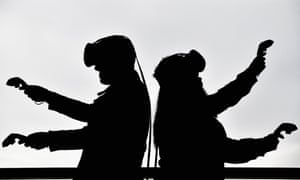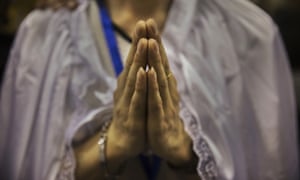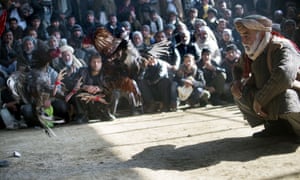How to Do Nothing with Nobody All Alone by
Yourself: A Timely Vintage Field Guide to Self-Reliant Play and Joyful Solitude
Brain Pickings ·
by
 Legendary psychoanalyst Adam Phillips has
written beautifully about why the capacity for
boredom is essential for a full life and Susan Sontag
contemplated the creative purpose
of boredom. Perhaps we understand this intellectually, but we — now
more than ever, it seems — have a profound
civilizational anxiety about being alone. And the seed for it is
increasingly planted in childhood — in an age when play is increasingly equated with screens
and interfaces, being alone with a screen is not quite being alone
at all, so the art of taking joy in one’s own company slips further and further
out of reach.
Legendary psychoanalyst Adam Phillips has
written beautifully about why the capacity for
boredom is essential for a full life and Susan Sontag
contemplated the creative purpose
of boredom. Perhaps we understand this intellectually, but we — now
more than ever, it seems — have a profound
civilizational anxiety about being alone. And the seed for it is
increasingly planted in childhood — in an age when play is increasingly equated with screens
and interfaces, being alone with a screen is not quite being alone
at all, so the art of taking joy in one’s own company slips further and further
out of reach.
In 1958, a self-described 42-year-old
kid named Robert Paul Smith penned a little book titled How
to Do Nothing with Nobody All Alone by Yourself (public
library), which his wife Elinor, an accomplished author
herself, illustrated — a delightful field guide to hacking household objects
and making mischievous contraptions from nature’s gifts, long before the rise
of hacker culture and the modern Maker Movement. Before working as a
broadcaster in Manhattan in the 1930s, an era prior to the dawn of television
and many decades before the web, Smith had grown up at a time when icemen
filled ice-boxes by horse and wagon and every house had a hatstand and “all
mothers sewed,” producing a steady supply of empty spools for kids to play with
— and yet his book is timeless and remarkably timely in both spirit and
hands-on ingenuity.
With a wink — perhaps inadvertent — to the existential
value of philosophy, Smith writes:
I understand
some people get worried about kids who spend a lot of time all alone, by
themselves. I do a little worrying about that, but I worry about something else
even more; about kids who don’t know how to spend any time all alone, by
themselves. It’s something you’re going to be doing a whole lot of, no matter
what, for the rest of your lives. And I think it’s a good thing to do; you get
to know yourself, and I think that’s the most important thing in the whole
world.
He offers how-to guidance on a wealth
of simple yet imaginative playthings — indoor boomerangs, pin pianos, broken
umbrella bow-and-arrows, pussy-willow bees, peach pit turtles, clamshell
bracelets “for your sister, if you’ve got a sister, or your girl, if you’ve got
a girl, or if not, just for the fun of making them,” a quirky prank-ready
contraption made out of “a chicken or a turkey wishbone, some chewing gum, a
burnt kitchen match and a rubber band.” Today, when even LEGO bricks come as
kits of pre-imagined possibilities, these unstructured activities — “There are no kits to build these things,” Smith
cautions — come as welcome assurance that there are enormous rewards in what
Richard Feynman called “the pleasure of finding
things out.”
 Indoor boomerang: ‘Get a piece of very
thin cardboard. If your father uses business cards, that’s exactly the right
kind of cardboard, and the right size. The top flap of a matchbook will do,
too. Now just cut a boomerang shape out of it, just about the same size and
shape as in the drawing. Now put it on a book, so that one arm sticks out just
a little bit. Flick it with your fingernail and it’ll go sailing out just like
an Australian boomerang, and after very little practice, you’ll find out how to
make it whirl so that it will come back to you. A good way to do it is to hold
the book in one hand, tipped up a little, so that the boomerang goes up in the
air at an angle, and slides back at just about the same angle, like a ball
going almost to the top of a hill, and then rolling down again.’
Indoor boomerang: ‘Get a piece of very
thin cardboard. If your father uses business cards, that’s exactly the right
kind of cardboard, and the right size. The top flap of a matchbook will do,
too. Now just cut a boomerang shape out of it, just about the same size and
shape as in the drawing. Now put it on a book, so that one arm sticks out just
a little bit. Flick it with your fingernail and it’ll go sailing out just like
an Australian boomerang, and after very little practice, you’ll find out how to
make it whirl so that it will come back to you. A good way to do it is to hold
the book in one hand, tipped up a little, so that the boomerang goes up in the
air at an angle, and slides back at just about the same angle, like a ball
going almost to the top of a hill, and then rolling down again.’
There is also subtle, charming humor:
These days,
you see a kid lying on his back and looking blank and you begin to wonder
what’s wrong with him. There’s nothing wrong with him, except he’s thinking… He
is trying to arrive at some conclusion about his thumb.
 Pin piano: ‘If you can get a piece of
wood and ten pins you can make a piano. Oh, not a big piano like the one you
have. You’d need a lot more wood and pins for that. This is a pin-piano, and
it’s a musical instrument, and it plays very piano. The word piano means soft.
The real name for a piano is pianoforte, and all it means is an instrument that
can play loud or soft. Well, this is a pin-piano and it just plays soft. All
you do is stick the pins into the piece of wood, each one a little further in
than that first one. If you take a nail and hit the pin, you’ll hear a certain
note. By pushing the next pin in a little further, you’ll hear a higher note.
And so on. Tune as you go, do re mi fa sol la ti do. But that’s only eight
pins. Why did I say ten? Because you’re going to bend at least two of the pins
trying to get them in to the right depth. ‘
Pin piano: ‘If you can get a piece of
wood and ten pins you can make a piano. Oh, not a big piano like the one you
have. You’d need a lot more wood and pins for that. This is a pin-piano, and
it’s a musical instrument, and it plays very piano. The word piano means soft.
The real name for a piano is pianoforte, and all it means is an instrument that
can play loud or soft. Well, this is a pin-piano and it just plays soft. All
you do is stick the pins into the piece of wood, each one a little further in
than that first one. If you take a nail and hit the pin, you’ll hear a certain
note. By pushing the next pin in a little further, you’ll hear a higher note.
And so on. Tune as you go, do re mi fa sol la ti do. But that’s only eight
pins. Why did I say ten? Because you’re going to bend at least two of the pins
trying to get them in to the right depth. ‘
But tucked inside Smith’s practical manifesto for self-reliant
play is also a love letter to public libraries, the merits of which he extolls
throughout the book as he encourages the reader to find out more about obscure
subjects and hobbies at the library. He writes:
If you don’t
know what a willow tree looks like, go to the public library and get out a book
about trees. You’ll notice that all through this book, I advise you to go to
the library when you want to find out something. I think just plain going to
the library and getting out a book is a swell thing to do. It’s something to
do, when you’ve got nothing to do, all by yourself. It’s a thing I still do
when I’ve got nothing special to do. I just wander around until I find a book
that looks interesting; let’s say, a book about ship-building, or rockets, or a
story by some author I’ve never heard of before. Now, chances are I’ll never
build a ship, or ride in a rocket, and maybe I won’t like the way the author I
never heard of writes. But it’s interesting to know how someone else builds a
ship, or plans to fly in a rocket, or how the author feels about things.
This adds another layer of timeliness
and wistful urgency to Smith’s book — today, as the web continues to grow
better at giving us more of what we’re looking for, it also grows exponentially
worse at helping us discover what we don’t yet know we ought to know, those invaluable
unknown-unknowns. The internet is a magnificent and vitalizing
medium in so many ways, but also an unforgiving one in others — amid this echo
chamber of our existing convictions and interests, we are nursed on the belief
that what isn’t online either doesn’t matter or doesn’t exist at all. And yet
the vast majority of human knowledge, what Vannevar Bush memorably called “the
common record” as he envisioned the web
in 1945, lives in out-of-print books and archives and other
materials of which the web makes no mark and thus takes no notice. The public
library is the closest thing we have to a time machine of human wisdom, to say
nothing of its essential role in
democracy.
 The Globe Chandelier at the Los Angeles
Public Library, from Robert Dawson’s book ‘The Public Library.’ Click image for
more.
The Globe Chandelier at the Los Angeles
Public Library, from Robert Dawson’s book ‘The Public Library.’ Click image for
more.
Smith later adds:
I’m really serious about the library:
that’s the best place to learn more. We did lots of other things when we were
kids, like collecting bugs, and wild flowers, and frogs, and snakes, and
stones—and in the library I promise you there will be a really expert book on
each of these, and on many other subjects, written by people who’ve made a life
study of those special things. There will be books about trees and radio sets
and telescopes and badminton and Indian crafts and metal work, about how to
make bows and arrows, how to swim, how to — oh, there’s no end. There’s even a
book on how to find a how-to book.
Some silly
grownup has even written a book on how to read a book.
The most memorable such silly grownup,
of course, was Virginia Woolf, whose meditation on how to read a book is
an infinitely rewarding classic.
Some of Smith’s ideas might raise a
few cautious eyebrows, but they spring from a place of sincere trust in
children’s innate goodness and intelligence. In one such controversial section,
he counsels, “You should learn how to sharpen
a knife,” adding: “Something
else that you’re just going to have to argue out with your mother; I did with
my mother, my kids did with their mother. A sharp knife is safer than a dull
knife.” Knives, in fact, play a prominent role in many of the
activities — from carving patterns into pencils to various versions of flipping
an actual pocket knife.
 ‘Take one of the hexagonal pencils
(hexagonal means six-sided, as a square is four-sided). These are usually
painted yellow. Now, cut a very thin sliver, like this, so you’ve lifted off a
little square of paint. Now on the side of the pencil right next to the side you’ve
cut, cut another little square of paint that you can sliver off. Now the next
side, and so on all around the pencil, making a checkerboard effect.’
‘Take one of the hexagonal pencils
(hexagonal means six-sided, as a square is four-sided). These are usually
painted yellow. Now, cut a very thin sliver, like this, so you’ve lifted off a
little square of paint. Now on the side of the pencil right next to the side you’ve
cut, cut another little square of paint that you can sliver off. Now the next
side, and so on all around the pencil, making a checkerboard effect.’
In addition to the knives, there are also guns — but the type that
would disarm even those of us most uneasy about the notion of kids
play-pretending with lethal weapons. Smith’s make-shift “guns” aren’t today’s
chillingly realistic plastic replicas, but ones made of wood and rubber bands.
They wink at Freud’s assertion that “the opposite of
play is not what is serious but what is real” — somehow, it’s
hard to imagine such contraptions correlating with fantasies of actual deathly
violence.
 Wood and rubber band gun: ‘The simplest
way to make one is just to cut a piece of wood, somewhere between a quarter of
an inch and half an inch thick, into a pistol shape. On the top, just jam the
point of your knife in so that it makes a flat hole. Then cut a piece of
cardboard into little half-inch squares. Put a rubber band on the gun, a rubber
band big enough so that when you pull it back over the top of the handle, it’s
good and stretched. You can put a thumbtack through the rubber band where it
comes over the front end of the pistol. Now jam one of the little cardboard
squares into the flat hole, like this. Now if you’ll hold the gun, you’ll find
that by rubbing your thumb up, you’ll push the rubber band up over the end of
the handle and it will spring forward and flick the card.’
Wood and rubber band gun: ‘The simplest
way to make one is just to cut a piece of wood, somewhere between a quarter of
an inch and half an inch thick, into a pistol shape. On the top, just jam the
point of your knife in so that it makes a flat hole. Then cut a piece of
cardboard into little half-inch squares. Put a rubber band on the gun, a rubber
band big enough so that when you pull it back over the top of the handle, it’s
good and stretched. You can put a thumbtack through the rubber band where it
comes over the front end of the pistol. Now jam one of the little cardboard
squares into the flat hole, like this. Now if you’ll hold the gun, you’ll find
that by rubbing your thumb up, you’ll push the rubber band up over the end of
the handle and it will spring forward and flick the card.’
While much of the book’s charm comes from its encouragement of an
active, joyful engagement with the natural world — horse chestnuts, for
instance, are quite simply “fun to get and fun to open the burrs and fun to
look at and fun to shine” — there is also a great deal of fun to be had by the
city child. New Yorkers, for instance, might find particular delight in Smith’s
bow-and-arrow transformation of broken umbrellas, a common seasonal feature of
our urban wilderness.
Alongside the playful projects are also
illuminating asides on the imperceptible innovations that underpin modern life.
Noting that busted umbrellas are harder to find than they used to be, Smith
writes:
In those days,
the olden days, umbrellas were made of cotton, or, if you were rich, silk. And
people used to walk a lot more then, because there weren’t so many cars, and
the umbrellas got used more, and cotton and silk, after a while, rot. Nowadays,
umbrellas aren’t used so much, and I imagine they’re made out of nylon, and
that doesn’t rot.
Indeed, playful as Smith’s premise is,
he also makes a handful of rather poignant asides that often apply to life well
beyond childhood play — like this perceptive remark on the perils of public
opinion:
If some of the
things sound a little childish, figure it out: do you think they’re too
childish, or do you think that if someone else saw you doing it, he would think
it was childish?
How
to Do Nothing with Nobody All Alone by Yourself is a
treat in its totality. Complement it with The
Little Red Schoolbook, a controversial instigator of independent
thinking in teens from the same era, then revisit this fantastic grown-up field
guide to the art of solitude.




